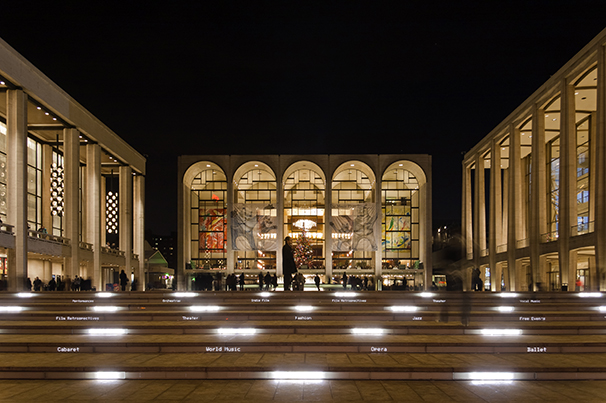Designers forgo Lincoln Center tents
February 13, 2014

During Fashion Week, Lincoln Center is always brimming with photographers, editors, models and others. This year, however, the tents were no longer the only go-to show locations.
More designers followed the recent trend of showing their fall and winter collections in venues scattered around New York City rather than at the traditional tents. Overcrowding and a lack of creative freedom at the official venue make off-site shows appealing to designers. Designers, such as Carolina Herrera, publicly expressed their disappointment in Lincoln Center, criticizing the large amount of commercialization at the tents through sponsors and media attention.
Although Herrera chose to show at Lincoln Center, her concerns were echoed by various other designers who were frustrated with the foot traffic around Lincoln Center during fashion week. IMG — the company arranging the event — tried to solve the problem of overcrowding at Lincoln Center with the addition of presentation space at the nearby Hub at the Hudson Hotel. Even with the extra space, the 69 shows at Lincoln Center and 10 presentations at the Hub still created to chaos.
Choosing an off-site location reduced traffic and granted designers the freedom to customize their location.
Rebecca Taylor is a supporter of having an off-site show, and said the spaces grant the designer more creative control. Designers can choose an off-site space that better matches their aesthetic and vision. They also have more flexibility with the layout for their fashion show or presentation, and they do not have to follow Lincoln Center’s guidelines.
This departure has been problematic for those trying to hop from show to show. Alexander Wang made the boldest move this season, moving his show to Brooklyn, which caused some showgoers frustration due to the trek. Other designers showed in the West Village and SoHo.
As designers gain more flexibility with their shows, those who attend the shows have to take on a more rigid schedule. Now that the shows are no longer grouped together, show attendees must factor in travel time into their schedules, and people have to choose between overlapping shows.
Despite the time crunch, there is an increased amount of creativity with the emergence of off-site shows, as well as an openness to new perspectives and ideas. When set free from location restrictions, designers can express their vision in new, exciting ways.
Evan Zhang is a contributing writer. Email her at [email protected].























































































































































